Hundreds dead after massive earthquake in Japan
2011/03/11 | Shawne McKeown and Michael Talbot, CityNews.ca
See Related Video
The original quake also led to hours of aftershocks - the most powerful of which struck central Japan and measured 6.6. It happened about 170 kilometres north of Tokyo. So far, no deaths have been reported from that quake.
Air Canada cancelled flights to Tokyo Friday. Check here for flight updates. Narita International Airport in Tokyo is closed.
A tsunami watch issued early Friday for the western coast of Canada has been upgraded to an advisory.
The advisory covers the north coast and the Haida Gwaii Islands, the Bella Bella and Shearwater areas and Vancouver Island from Cape Scott to Port Renfrew.
Beaches, marinas and other low-lying areas are being evacuated. No other areas are said to be in danger.
A tsunami warning is also in effect for the entire United States west coast and a large swath of the Pacific Rim, including Hawaii, Australia, Mexico and Chile -- 53 nations in all.
Evacuations were ordered in the coastal regions of Hawaii where the first waves hit around 3 a.m. local time (8 a.m. EST). A 4.5-magnitude quake also struck Hawaii just before 5 a.m. (EST).
The Hawaiian Island chain was expected to experience two-metre waves, although the first waves were reportedly smaller than expected. Experts have warned that the first waves of a tsunami aren’t always the strongest.
Tsunami sirens blared in the middle of the night Thursday warning people to take action. People have been scrambling to stock up on basic supplies, such as bottled water, gas, generators and canned food.
Waves hit the U.S. mainland at Port Orford, Ore. Around 11:30 a.m. (PST). Authorities ordered evacuations and closed beaches along the coast. Schools were closed and tourist areas shuttered in coastal areas throughout the state.
As many as 20 aftershocks hit Japan, some registering more than 6.0 – roughly the same size as the quake that hit New Zealand last month.
The epicenter was 125 kilometres off the eastern coast, about 380 kilometres northeast of Tokyo.
Buildings shook violently in the capital and the quake bent the upper tip of the Tokyo Tower and power was cut to more than four million buildings in the capital.
There have so far been no reports of radioactive leaks at the nation’s nuclear power plants, but a fire did break out in a turbine building of a nuclear plant. A fire also erupted at an oil refinery in Ichihara city in Chiba prefecture near Tokyo.
Thousands of residents near a nuclear power plant in Onahama city -- 270 km northeast of Tokyo -- were ordered to evacuate after the plant’s system was unable to cool the reactor.
On Friday Prime Minister Stephen Harper said Canada is prepared to provide any assistant the Japanese government needs.
“We want to extend our sympathies to the Japanese people, there’s been a significant loss of life. I’ll be speaking to my Japanese counterparts, I suspect, in the next day or two and we’re willing to provide any assistance that they can use,” he said during an in-studio interview on Breakfast Television.
“The one thing I should say is obviously we’re concerned this is coming towards Canada … there are drills in British Columbia for this kind of thing so I think they have it in hand.”
Ontario Premier Dalton McGuinty also offered condolences.
“Our deepest sympathies are with those who have lost loved ones and our hearts go out to those who are trying to reach their family members and friends. Our thoughts are also with those throughout the Pacific region who may also be affected by the tsunami,” he said.
There are approximately 14,500 people of Japanese origin living in Toronto, the city said Friday.
"On behalf of City Council and all Toronto residents, I want to extend my deepest sympathies to the people of Japan, especially in the areas devastated by today's earthquake and tsunami. I have contacted Mr. Tetsuo Yamashita, Consul General of Japan in Toronto, and have offered my condolences and support during this time," Mayor Rob Ford said in a statement.
There are so far no reports of Canadians being injured or killed in Japan. There are about 1,500 Canadians registered with the embassy in Tokyo. Canadians can call Foreign Affairs at 1-800-387-3124 for more information.
The Canadian Red Cross is also accepting financial donations for the Japanese quake relief effort. You can call 1-800-418-1111 or donate online here.
Beginning today, Rogers and Fido wireless customers can text ASIA to 30333 to donate $5 to earthquake relief efforts. The money - 100 per cent of all donations - will go to the Canadian Red Cross Japan Earthquake/Asia-Pacific Tsunami fund. Rogers is also making TV Japan available on free preview on Channel 829 to all digital cable customers.
The Toronto-based Global Medic has been in contact with the Japanese Embassy and is on standby for deployment. More than 500 trained volunteers are ready for the call.
If asked to assist, the group’s priorities would include search and rescue and providing clean water.
With files from The Associated Press.
See Prime Minister Stephen Harper comment on the earthquake in Japan on BT in the video below:
2011/03/11 | Shawne McKeown and Michael Talbot, CityNews.ca
See Related Video
The original quake also led to hours of aftershocks - the most powerful of which struck central Japan and measured 6.6. It happened about 170 kilometres north of Tokyo. So far, no deaths have been reported from that quake.
Air Canada cancelled flights to Tokyo Friday. Check here for flight updates. Narita International Airport in Tokyo is closed.
A tsunami watch issued early Friday for the western coast of Canada has been upgraded to an advisory.
The advisory covers the north coast and the Haida Gwaii Islands, the Bella Bella and Shearwater areas and Vancouver Island from Cape Scott to Port Renfrew.
Beaches, marinas and other low-lying areas are being evacuated. No other areas are said to be in danger.
A tsunami warning is also in effect for the entire United States west coast and a large swath of the Pacific Rim, including Hawaii, Australia, Mexico and Chile -- 53 nations in all.
Evacuations were ordered in the coastal regions of Hawaii where the first waves hit around 3 a.m. local time (8 a.m. EST). A 4.5-magnitude quake also struck Hawaii just before 5 a.m. (EST).
The Hawaiian Island chain was expected to experience two-metre waves, although the first waves were reportedly smaller than expected. Experts have warned that the first waves of a tsunami aren’t always the strongest.
Tsunami sirens blared in the middle of the night Thursday warning people to take action. People have been scrambling to stock up on basic supplies, such as bottled water, gas, generators and canned food.
Waves hit the U.S. mainland at Port Orford, Ore. Around 11:30 a.m. (PST). Authorities ordered evacuations and closed beaches along the coast. Schools were closed and tourist areas shuttered in coastal areas throughout the state.
As many as 20 aftershocks hit Japan, some registering more than 6.0 – roughly the same size as the quake that hit New Zealand last month.
The epicenter was 125 kilometres off the eastern coast, about 380 kilometres northeast of Tokyo.
Buildings shook violently in the capital and the quake bent the upper tip of the Tokyo Tower and power was cut to more than four million buildings in the capital.
There have so far been no reports of radioactive leaks at the nation’s nuclear power plants, but a fire did break out in a turbine building of a nuclear plant. A fire also erupted at an oil refinery in Ichihara city in Chiba prefecture near Tokyo.
Thousands of residents near a nuclear power plant in Onahama city -- 270 km northeast of Tokyo -- were ordered to evacuate after the plant’s system was unable to cool the reactor.
On Friday Prime Minister Stephen Harper said Canada is prepared to provide any assistant the Japanese government needs.
“We want to extend our sympathies to the Japanese people, there’s been a significant loss of life. I’ll be speaking to my Japanese counterparts, I suspect, in the next day or two and we’re willing to provide any assistance that they can use,” he said during an in-studio interview on Breakfast Television.
“The one thing I should say is obviously we’re concerned this is coming towards Canada … there are drills in British Columbia for this kind of thing so I think they have it in hand.”
Ontario Premier Dalton McGuinty also offered condolences.
“Our deepest sympathies are with those who have lost loved ones and our hearts go out to those who are trying to reach their family members and friends. Our thoughts are also with those throughout the Pacific region who may also be affected by the tsunami,” he said.
There are approximately 14,500 people of Japanese origin living in Toronto, the city said Friday.
"On behalf of City Council and all Toronto residents, I want to extend my deepest sympathies to the people of Japan, especially in the areas devastated by today's earthquake and tsunami. I have contacted Mr. Tetsuo Yamashita, Consul General of Japan in Toronto, and have offered my condolences and support during this time," Mayor Rob Ford said in a statement.
There are so far no reports of Canadians being injured or killed in Japan. There are about 1,500 Canadians registered with the embassy in Tokyo. Canadians can call Foreign Affairs at 1-800-387-3124 for more information.
The Canadian Red Cross is also accepting financial donations for the Japanese quake relief effort. You can call 1-800-418-1111 or donate online here.
Beginning today, Rogers and Fido wireless customers can text ASIA to 30333 to donate $5 to earthquake relief efforts. The money - 100 per cent of all donations - will go to the Canadian Red Cross Japan Earthquake/Asia-Pacific Tsunami fund. Rogers is also making TV Japan available on free preview on Channel 829 to all digital cable customers.
The Toronto-based Global Medic has been in contact with the Japanese Embassy and is on standby for deployment. More than 500 trained volunteers are ready for the call.
If asked to assist, the group’s priorities would include search and rescue and providing clean water.
With files from The Associated Press.
See Prime Minister Stephen Harper comment on the earthquake in Japan on BT in the video below:
Sphere: Related Content
![Validate my Atom 1.0 feed [Valid Atom 1.0]](valid-atom.png)























































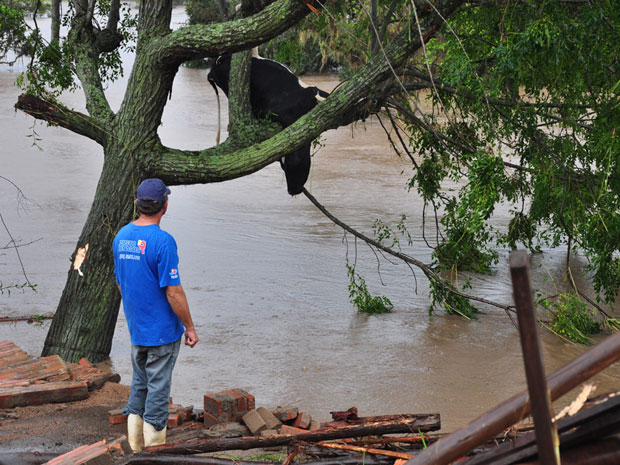 Vaca foi levada pela enxurrada e parou na copa desta árvore (Foto: Nauro Júnior/Zero Hora/Agência RBS)
Vaca foi levada pela enxurrada e parou na copa desta árvore (Foto: Nauro Júnior/Zero Hora/Agência RBS)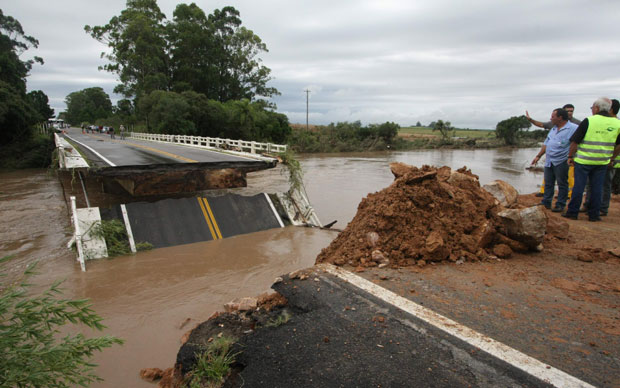 Chuva derrubou cabeceira de ponte em rodovia que liga São Lourenço do Sul a Turuçu (Foto: Carlos Queiroz/Agência Freelancer)
Chuva derrubou cabeceira de ponte em rodovia que liga São Lourenço do Sul a Turuçu (Foto: Carlos Queiroz/Agência Freelancer)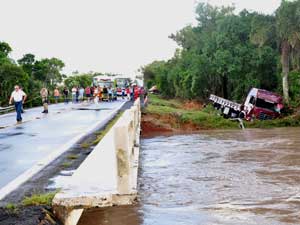 Rio São Lourenço enchey (Foto: Nauro Júnior/
Rio São Lourenço enchey (Foto: Nauro Júnior/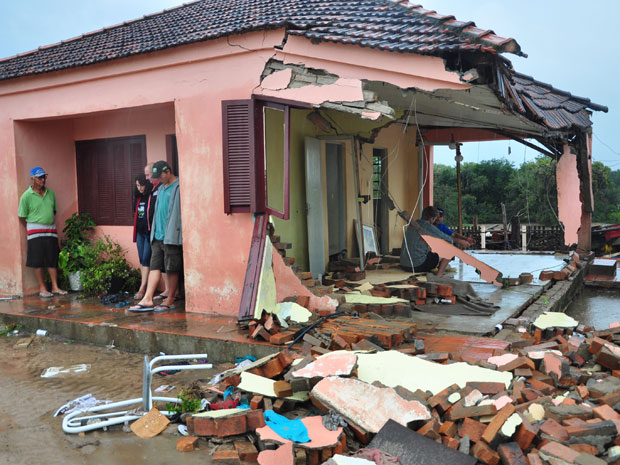 Casa destruída pela chuva forte em São Lourenço do Sul (RS) (Foto: Nauro Júnior/Agência RBS)
Casa destruída pela chuva forte em São Lourenço do Sul (RS) (Foto: Nauro Júnior/Agência RBS)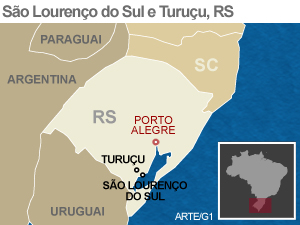


 The tides from the Moon and Sun affect our oceans and large bodies of water, and they also affect the solid Earth — the land under you rises and falls by about a meter every single day as the Earth spins under the Moon!
The tides from the Moon and Sun affect our oceans and large bodies of water, and they also affect the solid Earth — the land under you rises and falls by about a meter every single day as the Earth spins under the Moon! 





















